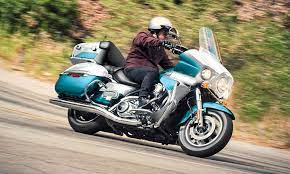How To Stay Safe On Your Bike Road Trip: Tips For Avoiding Accidents And Injuries
How to Stay Safe on Your Bike Road Trip: Tips for Avoiding Accidents and Injuries– Embarking on a bike road trip can be an exhilarating and adventurous experience. However, safety should always be a top priority to ensure a smooth and enjoyable journey. Whether you’re a seasoned rider or a novice cyclist, following a few essential guidelines can significantly reduce the risk of accidents and injuries. In this blog, we will explore How to Stay Safe on Your Bike Road Trip: Tips for Avoiding Accidents and Injuries.
 Before setting off on your bike road trip, take the time to plan your route meticulously. Identify roads that are bicycle-friendly, with wide shoulders or dedicated bike lanes, whenever possible. Research potential hazards such as heavy traffic areas, construction zones, or high-crime neighborhoods and try to avoid them. Utilize online mapping tools specifically designed for cyclists to find the safest and most scenic routes for your journey. Keep reading to learn more.
Before setting off on your bike road trip, take the time to plan your route meticulously. Identify roads that are bicycle-friendly, with wide shoulders or dedicated bike lanes, whenever possible. Research potential hazards such as heavy traffic areas, construction zones, or high-crime neighborhoods and try to avoid them. Utilize online mapping tools specifically designed for cyclists to find the safest and most scenic routes for your journey. Keep reading to learn more.
How To Stay Safe On Your Bike Road Trip: Tips For Avoiding Accidents And Injuries
Here are some tips you must know to stay safe on your road trip.
Check Your Bike and Gear
Your bicycle is your primary mode of transportation on the road trip, so it’s crucial to ensure it is in optimal condition. Conduct a thorough inspection of your bike before you begin your trip. Check the tires for wear and tear, make sure the brakes are functioning properly, and ensure that all the gears are shifting smoothly. Additionally, pack essential gear such as a helmet, reflective clothing, lights, a spare tube, a tire repair kit, and a basic tool kit. Remember, safety starts with well-maintained equipment.
Wear Appropriate Safety Gear
Protective gear is your best defense against potential accidents and injuries. Always wear a properly fitted helmet that meets safety standards to safeguard your head in case of a fall or collision. Invest in high-visibility clothing or reflective gear to make yourself more visible to motorists, especially during low-light conditions. Consider wearing elbow and knee pads for added protection, particularly if you’re planning to engage in off-road or mountain biking activities during your trip.
Obey Traffic Rules and Signals
As a cyclist, it’s essential to follow the same traffic rules and signals as motorists. Stop at red lights and stop signs, yield to pedestrians, and use appropriate hand signals to indicate your intentions. By obeying traffic rules, you not only increase your own safety but also enhance the predictability of your movements for other road users. Remember, visibility and predictability are key to sharing the road safely.
Be Aware of Your Surroundings
Maintaining situational awareness is crucial when cycling on unfamiliar roads. Always stay alert and keep an eye on the road ahead and behind you. Scan for potential hazards, such as potholes, debris, or loose gravel, that may pose a risk to your safety. Be cautious at intersections and watch out for turning vehicles. Avoid distractions, such as listening to loud music or using your phone, as they can compromise your ability to react swiftly to sudden changes in traffic.
Ride Defensively
Adopting a defensive riding style can significantly reduce the chances of accidents. Assume that motorists may not see you and always ride as if you are invisible. Give yourself plenty of space between parked cars to avoid opening doors and be prepared for sudden lane changes from drivers. Anticipate potential hazards and have an escape plan in mind. Be prepared to brake or maneuver quickly if necessary.
Stay Hydrated and Take Breaks
Long hours of cycling can be physically demanding, so it’s crucial to stay hydrated and take regular breaks. Dehydration can lead to fatigue and decreased alertness, increasing the risk of accidents. Carry an adequate supply of water and drink at regular intervals. Take short breaks to stretch your muscles, rest, and rejuvenate yourself. Listen to your body’s signals and avoid pushing yourself beyond your limits.
Communicate and Signal Your Intentions
Clear communication with other road users is crucial to staying safe on your bike road trip. Use hand signals to indicate your turns, stops, and lane changes. Make eye contact with drivers to ensure they see you before making any maneuvers. Signal well in advance to give motorists ample time to react. By effectively communicating your intentions, you reduce the chances of misunderstandings and potential collisions.
Be Mindful of Weather Conditions
Weather conditions can greatly impact your safety on a bike road trip. Check the weather forecast before you start your journey and be prepared for changes throughout the day. Rain, strong winds, or extreme heat can make cycling more challenging and increase the risk of accidents. Adjust your speed and riding style accordingly and consider taking shelter or pausing your trip if the conditions become unsafe.
Maintain Proper Nutrition and Rest
Cycling long distances requires stamina and endurance. It’s essential to fuel your body with proper nutrition and get enough rest during your road trip. Pack healthy snacks and meals to maintain your energy levels throughout the day. Stay hydrated by drinking water regularly, especially in hot weather. Adequate rest is crucial for avoiding fatigue, which can impair your focus and reaction time. Aim for quality sleep each night to ensure you’re refreshed and alert for the next day’s ride.
Be Cautious of Fatigue
Fatigue can be a significant safety concern during a bike road trip, especially if you’re covering long distances. Know your limits and listen to your body. Take breaks whenever you feel tired or experience decreased concentration. Stretch your muscles, take short walks, or simply relax to recharge your energy. If necessary, adjust your itinerary to include shorter daily distances or rest days to prevent exhaustion.
Stay Visible in Low-Light Conditions
When cycling during dawn, dusk, or at night, visibility becomes even more critical. Ensure your bike has functioning front and rear lights that are visible from a distance. Wear reflective clothing or accessories to make yourself more visible to motorists. Consider adding reflective tape to your bike frame or panniers for added visibility. Always assume that others may have difficulty seeing you in low-light conditions and take extra precautions to stay safe.
Trust Your Instincts
As you embark on your bike road trip, trust your instincts and intuition. If a road or situation doesn’t feel safe, find an alternative route or seek advice from locals. If you encounter aggressive or dangerous drivers, find a safe place to pull over and let them pass. Your safety should always be the priority, and it’s essential to make informed decisions based on your gut feelings.
Conclusion
A bike road trip can be an incredible adventure, allowing you to explore new places and experience the freedom of the open road. By following these tips and guidelines, you can significantly reduce the risk of accidents and injuries. Remember to plan your route carefully, maintain your bike and gear, wear appropriate safety gear, obey traffic rules, and stay aware of your surroundings. Communication, proper nutrition, rest, and managing fatigue are also crucial for a safe and enjoyable journey. Ultimately, trust your instincts and prioritize your safety at all times. So gear up, hit the road, and have an amazing bike road trip while staying safe!
Frequently Asked Questions (FAQs)
Q1 Do I need any special training or experience to go on a bike road trip?
A1 While prior cycling experience is helpful, a bike road trip is open to riders of all skill levels. It’s recommended to be comfortable riding on different types of terrain and in various weather conditions. If you’re a beginner, consider practicing on local roads or joining group rides to build your confidence before embarking on a long-distance road trip.
Q2 How do I handle bike maintenance during a road trip?
A2 Regular bike maintenance is crucial during a road trip. Carry a basic tool kit and learn how to perform minor repairs, such as fixing a flat tire or adjusting brakes and gears. Familiarize yourself with local bike shops along your route in case you need professional assistance. Check your bike’s condition daily, especially tire pressure and brake functionality, to catch any issues before they escalate.
Q3 What should I do if I get injured during the trip?
A3 If you sustain an injury while on your bike road trip, prioritize your safety and seek medical attention if necessary. Carry a first aid kit with essentials like bandages, antiseptic wipes, and pain relievers. Contact emergency services or local healthcare providers if the injury requires immediate attention. Consider having travel insurance that covers medical emergencies to ensure you receive proper care.
Q4 How can I stay safe when riding in a group?
A4 Riding in a group can be enjoyable, but it requires additional precautions. Communicate with your fellow riders and establish clear hand signals or verbal cues to indicate upcoming turns, stops, or hazards. Maintain a safe distance between riders to allow for sudden maneuvers or braking. Be mindful of other riders’ abilities and adjust your pace accordingly. Additionally, ensure each group member has emergency contact information readily available.
Q5 Are there any specific tips for riding at night?
A5 Riding at night presents unique challenges. Wear reflective clothing and equip your bike with front and rear lights to enhance visibility. Use a headlight with a strong beam to illuminate the road ahead. Stick to well-lit routes and avoid areas with heavy traffic if possible. Be even more vigilant about checking for hazards since they may be harder to see in the dark.
Q6 How can I secure my bike when stopping for meals or sightseeing?
A6 Invest in a quality bike lock and always secure your bike when you’re away from it. Lock it to a sturdy object, such as a bike rack or a fixed structure, ensuring both the frame and wheels are secured. Consider using a secondary lock or removing easily detachable components like the front wheel to deter theft. Additionally, try to park your bike in well-lit and busy areas to minimize the risk of theft.





